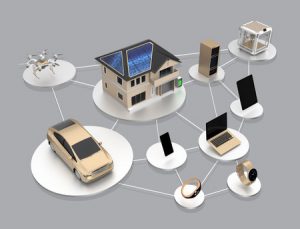Internet connected devices are useful tools, but they are an open door into your network. The internet of things (IoT) is exploding with 27 billion of these devices currently operating and most are not protected in any way. As billions more devices get connected to the Internet each year, the risk posed by these devices continues to grow. Many of the low-cost devices targeted at the smart-home and consumer markets have little or no security and no ability to add security. Furthermore, the device owners are typically unaware of the risk posed by the seemingly harmless and cute devices. 
Unfortunately, once the device is plugged in, the global community of hackers is lurking and ready to instantly turn that newly connected device into the latest weapon in their arsenal. They will use it to participate in distributed denial of service (DDoS) attacks, spam relays, ad fraud, fake news dissemination, and other crimes. In nearly all cases (other than for ransomware), the device owner is completely unaware that their device has been hacked and control transferred to some unseen and unknown hacker, all while their devices are being used to perpetrate countless attacks against other websites, companies and individuals.
We work with zvelo, a Colorado-based cybersecurity company that is amongst the leaders in finding ways to not only identify the devices connected to a network, but also to detect which devices have been hacked. Then it takes measures to eliminate the risk posed by the compromised devices. zvelo has developed technology used to profile devices connected to your network, monitor their activity, and alert you when these devices have been hacked or compromised. Optionally, zvelo can automatically take the actions required to isolate these devices and eliminate the risks they pose.
So how do you protect yourself and your company? First, make sure you are taking the steps to change the default passwords on the IoT devices you install. You can also implement segments within your network to segregate various devices based on their functionality or importance to your network. Depending on your requirements and size of network, you can also implement solutions from companies (such as zvelo) that automatically and continuously monitor the devices on your network, detect compromised devices, and remove them and the threats from your network.
The bottom line is that you cannot ignore smart light bulbs, thermostats, appliances and any equipment that connects to the internet. Target was hacked through HVAC systems and we all should learn from that. Make it hard for hackers by updating passwords with complex combinations. Write them down in a secure place so you don’t have to worry about remembering them.
We offer two hours of free consultation. Why not take us up on it? Just call!


